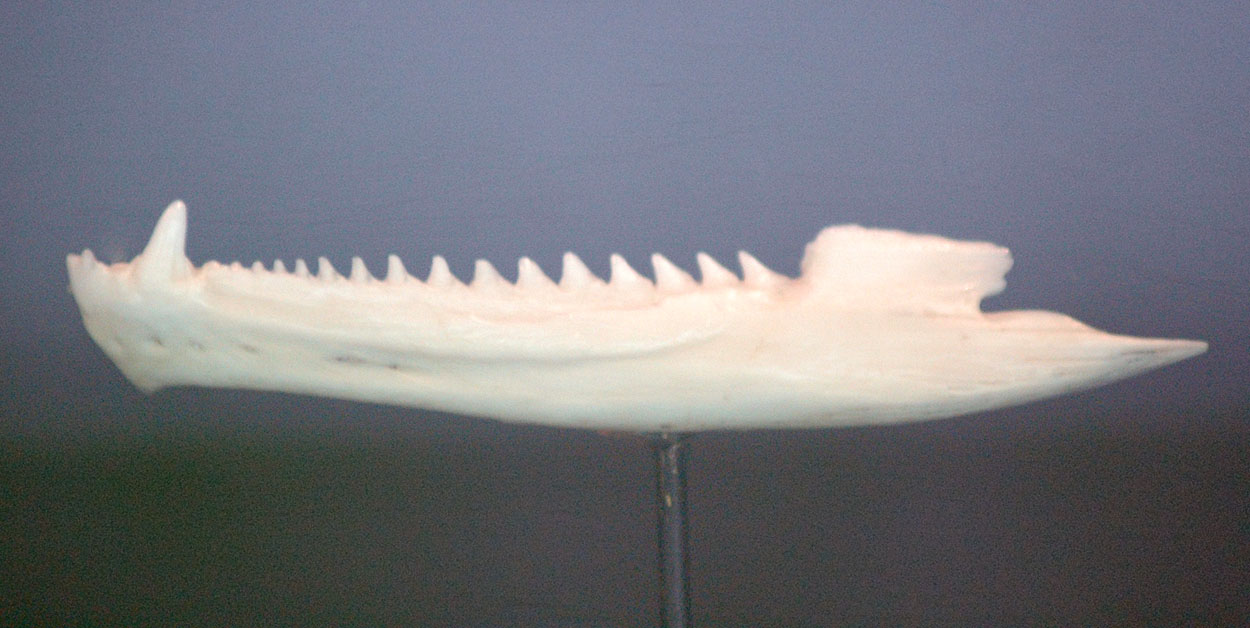Acrodont on:
[Wikipedia]
[Google]
[Amazon]
Acrodonty (from Greek ''akros'' 'highest' + ''dont'' 'tooth') is an anatomical placement of the teeth at the summit of the 
Tooth Implantation
Oral Cavity of Reptiles - Anatomy and Physiology
Dentition types {{lizard-stub
alveolar ridge
The alveolar process () or alveolar bone is the thickened ridge of bone that contains the tooth sockets on the jaw bones (in humans, the maxilla and the mandible). The structures are covered by gums as part of the oral cavity.
The synonymous ...
of the jaw, without sockets, characteristic of bony fish
Osteichthyes (), popularly referred to as the bony fish, is a diverse superclass of fish that have skeletons primarily composed of bone tissue. They can be contrasted with the Chondrichthyes, which have skeletons primarily composed of cartil ...
. Functionally, acrodont tooth implantation may be related to strong bite force.

Acrodonty in the Animal Kingdom
Squamata: Within squamate reptiles, acrodont tooth implantation is best known in Acrodonta and some species ofamphisbaenia
Amphisbaenia (called amphisbaenians or worm lizards) is a group of usually legless squamates, comprising over 200 extant species. Amphisbaenians are characterized by their long bodies, the reduction or loss of the limbs, and rudimentary eyes. As ...
ns, though some snakes are also referred to as being acrodont. Acrodonta is unique in that the name of the clade is based upon this trait. Most other squamate reptiles have pleurodont dentition, though some snakes are occasionally described as having acrodont dentition.
Rhynchocephalia: Acrodont tooth implantation is common within Rhynchocephalia
Rhynchocephalia (; ) is an order of lizard-like reptiles that includes only one living species, the tuatara (''Sphenodon punctatus'') of New Zealand. Despite its current lack of diversity, during the Mesozoic rhynchocephalians were a diverse gr ...
, including ''Sphenodon
Tuatara (''Sphenodon punctatus'') are reptiles endemic to New Zealand. Despite their close resemblance to lizards, they are part of a distinct lineage, the order Rhynchocephalia. The name ''tuatara'' is derived from the Māori language and m ...
''.
Amphibia: Acrodont tooth implantation also present in some frogs
A frog is any member of a diverse and largely carnivorous group of short-bodied, tailless amphibians composing the order Anura (ανοὐρά, literally ''without tail'' in Ancient Greek). The oldest fossil "proto-frog" '' Triadobatrachus'' is ...
and the temnospondyl
Temnospondyli (from Greek τέμνειν, ''temnein'' 'to cut' and σπόνδυλος, ''spondylos'' 'vertebra') is a diverse order of small to giant tetrapods—often considered primitive amphibians—that flourished worldwide during the Carb ...
''Microposaurus
''Microposaurus'' (meaning "small eyed lizard"; from Greek , "small" + , "face" or "eye" + , "lizard") is an extinct genus of trematosaurid temnospondyl. Fossils are known from the Cynognathus Assemblage Zone of the Beaufort Group (part of the K ...
''.Damiani, Ross (2004). "Cranial anatomy and relationships of Microposaurus casei, a temnospondyl from the Middle Triassic of South Africa". Journal of Vertebrate Paleontology. 24 (3): 533–41. doi:10.1671/0272-4634(2004)024 533:caarom.0.co;2.
References
External links
Tooth Implantation
Oral Cavity of Reptiles - Anatomy and Physiology
Dentition types {{lizard-stub